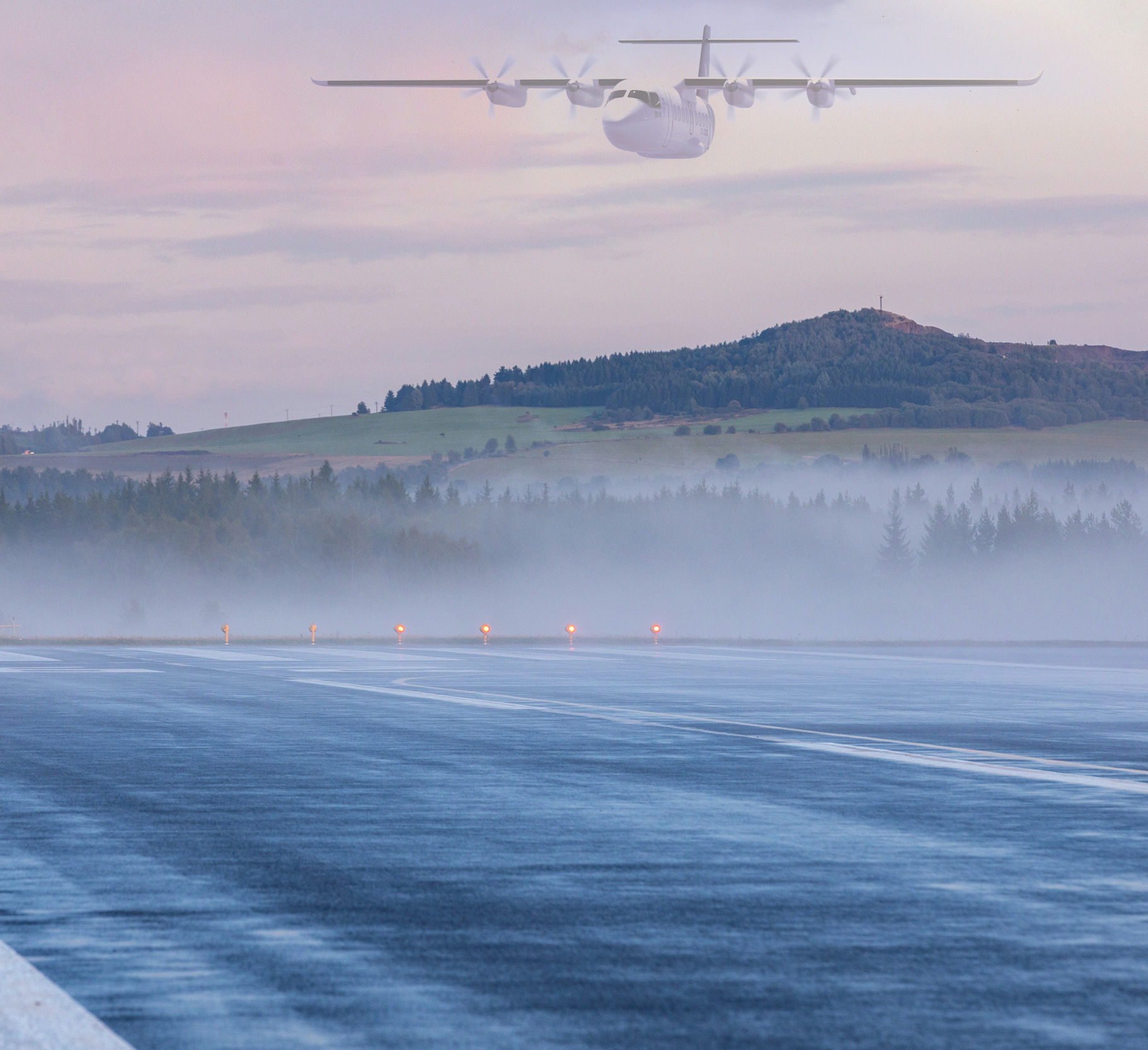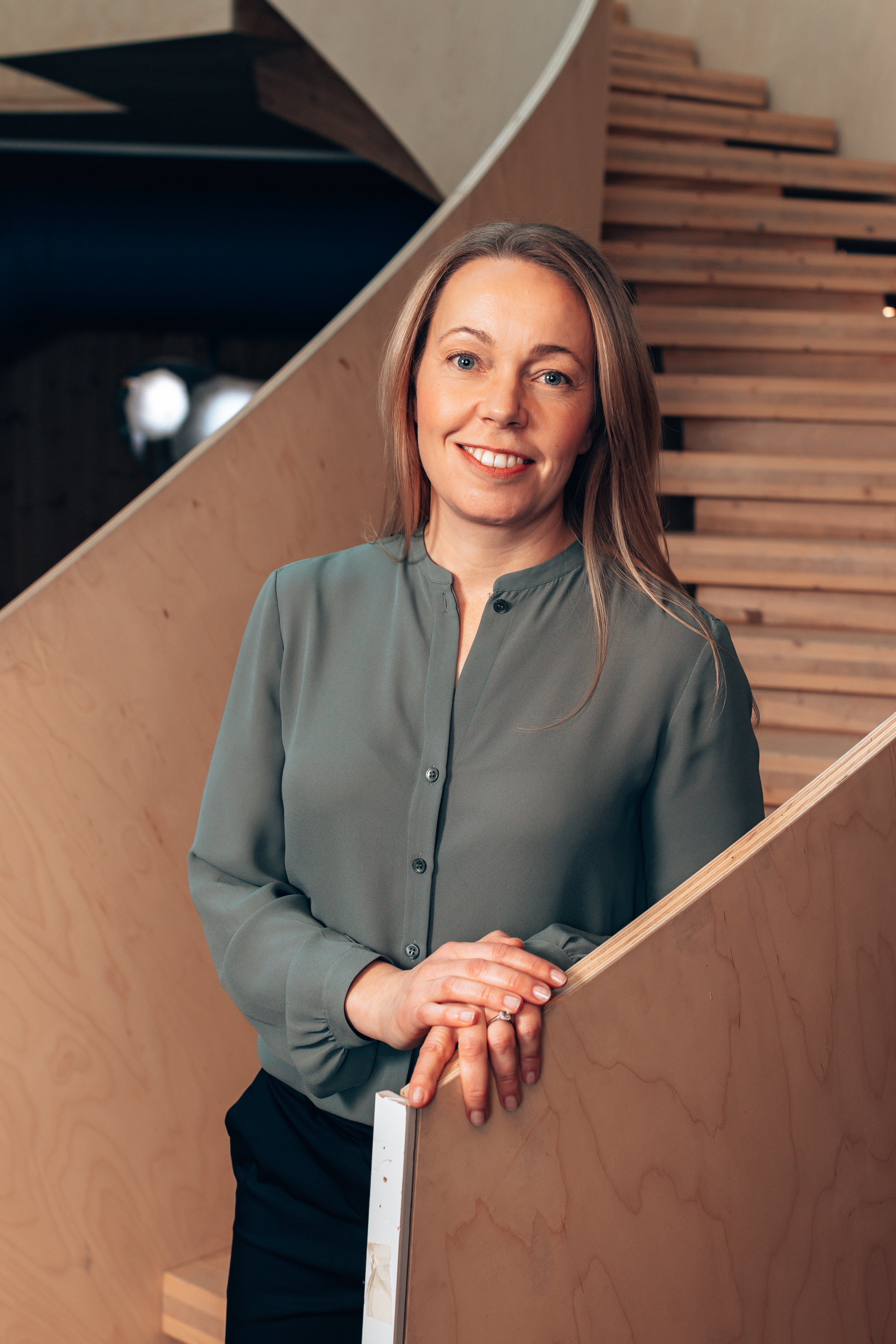
FAIR
FAIR – Promoting electric aviation
FAIR (Finding innovations to Accelerate the Implementation of electric Regional aviation) is a first step of preparing the Kvarken-Nordland region for an early implementation of electric aviation.
The project increases the knowledge base, investigates the possibilities and surveys both the needs and the required technical investments.
THE KVARKEN REGION AND ELECTRIC AVIATION
Electric-powered aircraft already exist, and there are several ongoing development projects. In terms of regional flights, a smaller electric-powered aircraft for up to 19 passengers and with a flight range of 400 kilometers would suit the region well. This range is sufficient for commuting, recreation, and cooperation in the Kvarken region.
The project’s partnership consists largely of actors in the Kvarken region, i.e. the counties of Ostrobothnia, South Ostrobothnia, and Central Ostrobothnia in Finland and the county of Västerbotten and municipality of Örnsköldsvik in Sweden.
The geography of FAIR includes also Nordland County in Norway.
![Merenkurkun-neuvosto-kartta_jun2021_v002_RGB[1] FAIR karta](https://www.kvarken.org/wp-content/uploads/2021/06/Merenkurkun-neuvosto-kartta_jun2021_v002_RGB1.png)
BACKGROUND
The project has a broad partnership of actors and is coordinated by the Kvarken council as project owner. It builds on a history of extensive cross-border collaboration in the region in different projects. This project is in line with the Traffic strategy for the E12-region with goals for carbon neutral transport as well as measures aimed at investigating east-west regional flight routes.
The technical progress of electric aviation is rapidly advancing. Within the coming five-year period several models of regional electric aircraft will be on the market. Since electric aircraft does not produce any operational greenhouse gas emissions, it is set to be one of the most climate-efficient modes of transport in the future. At the same time, electric operation means drastically reduced fuel and maintenance costs, which creates very competitive operating costs and thus potential for a completely new regional air system.
Early implementation of electric aviation in the Kvarken region has the potential to effectively address some of the region’s major challenges such as demographic change and urbanization, long distances and the lack of east-west communications, and the global need to reduce greenhouse gas emissions and environmental impact.



OBJECTIVES
FAIR is divided into four objectives
1. Proposing where to implement electric-powered regional flights in the Kvarken region and increase knowledge of the regional effects
2. Invent the need of measures at nodes and examine financing options
3. Develop innovative concepts and business models supporting an early implementation of electric-powered regional aircraft
4. Raise awareness / knowledge of regional electric aviation in the region to promote demand and accelerate application
WHY ELECTRIC AVIATION?
ZERO EMISSIONS
LOWER COSTS
INCREASED CONNECTIVITY
PROJECT RESULTS
Method for commercializing electric aviation in the Kvarken region
– Know-how on the effects of electric aviation in the region
– Guideline on needs of measures and funding solutions
– Innovative concepts (products, services and business models)
– Integration of gender equality and non-discrimination
– International network on electric aviation
– Enhanced connections between regional actors and businesses
– Input to EU, national and nordic level, aviation industry
DELIMITATIONS
The runtime of FAIR is 2020-05-01 – 2022-10-31
The FAIR project does not involve any physical investments.
BUDGET
The budget of FAIR is: 1 338 000 EUR, whereof 60% EU-funding via the Interreg Botnia-Atlantica programme. The rest of the funding comes from national and regional co-funding, from the Nordic Council of Ministers and from municipal and private co-funding.

FINANCIERS
Interreg Botnia Atlantica | Region Västerbotten | Regional Council of Ostrobothnia | Kvarken Council (Lead part) | BioFuel Region BFR AB | City of Vaasa | FAB Kronoby Flyghangar | Into Seinäjoki Oy | Lycksele Airport AB | Ostrobothnia Chamber of Commerce | RISE Research Institutes of Sweden | Skellefteå City Airport AB | Skellefteå Kraft AB | South Ostrobothnia Chamber of Commerce | Storumans Kommunföretag AB | Swedavia Umeå Airport | Umeå Municipality | Umeå University | University of Vaasa | Vaasan Sähkö Oy | Vaasa Region Development Company, VASEK | Västerbotten Chamber of Commerce | Örnsköldsvik Airport AB | Nord University | MidtSkandia | Nordland County Municipality | Brønnøy Municipality | Alstahaug Municipality | Helgeland Regional Council | Indre Helgeland Regional Council | Rana Utvikling
SUPPORTING PARTNERS
Air Traffic Network | BSR ACCESS | ELISE | Finavia | Funktionshinderrådet Umeå | Future Cleantech Solutions | Green Flyway | Grön Flygplats | Heart Aerospace | Helsinki Electric Aviation Association ry | Jonair | Luftfartsverket | NEA – Nordic Network for Electric Aviation | Umeå kommunföretag AB | Umeå Institute of Design | The Swedish 2030-secretariat | Transportföretagen | Avinor










Infosheets
Related reports
Contact

Project owner and chairman of the steering committee
Mathias Lindström
mathias.lindstrom@kvarken.org
+358 50 918 6462

Communications Manager
Johanna Häggman
johanna.haggman@kvarken.org
+358 50 309 2960
Lead part
Kvarken Council
Project managers
Forsgren, Andreas
AndreasA.Forsgren@tyrens.se
+46 10 451 93 70
Brändström Isak
Isak.Brandstrom@tyrens.se
+46 10 451 94 04
FAIR Work packages (WP)
WP1 Regional effects of electric aviation
Work package coordinator
Lars Westin
lars.westin@umu.se
WP2 Guidelines for implementation
Work package coordinator
Arne Smedberg
arne.smedberg@biofuelregion.se
WP3 Cross-border innovation process
Work package coordinator
Jeroen Peeters
jeroen.peeters@ri.se
Carita Roslund
carita.roslund@ri.se

